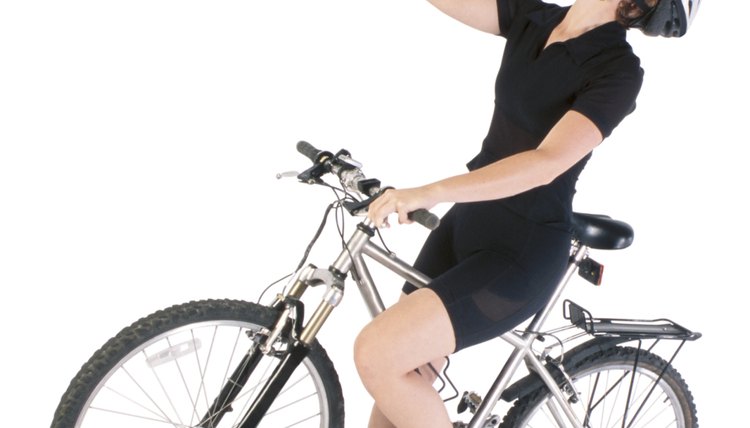How to Use a Mini Bicycle Pump

A mini bike pump can be a trip-saver if your tire loses air while out on your bike. However, their small size can make them awkward and difficult to use. Knowing how to use your mini pump can take some of the worry out of going on a long bike trip.
Determine your bike's valve type. The two most common valve types are the Schrader valve and Presta valve. Schrader valves are most commonly found on car tires and kids bikes, while Presta valves are most commonly found on higher end bicycles.
Configure your pump for the valve type. Some pumps have a dual head, with one side that works for each valve type. In other pumps, you may have to disassemble the nozzle and flip over a plastic and rubber piece so it will fit the type of valve you have. Check your instruction manual to figure out which type of pump you have.
Open the valve on your tire. For Schrader valves, all you need to do is remove the cap, if you have one. For Presta valve, you need to remove a cap and loosen a nut at the end of the valve. Once the nut is loosened, pressing the end of the valve will release air.
Verify the pump is in the unlocked position: For most mini pumps there will be a lever that is unlocked when flat against the pump and locked when at a 90-degree angle to the pump. However, for some pumps, the reverse is true, so check your owners' manual to identify the correct position for your pump.
Slide the pump onto the valve with a simple push. Try to apply even pressure straight onto the valve. Pushing the valve to the side may cause a leak over time.
Lock the pump onto the valve when you hear air escaping. Some pumps lock with a twisting motion while others have a lever to pull.
Support the pump near the valve. Place your hand behind the part of the pump connected to the valve to create a sturdier fit. Be careful not to apply pressure to the wheel spoke as pressing on a wheel spoke can cause your wheel to go out of alignment.
Pump until your desired air pressure is reached: If you don't know how much pressure you should put in your tire, take a look at the tire sidewall. You will find a max air pressure rating you should stay under.
Unlock your pump: Once you have enough air pressure, unlock your pump.
Remove the pump from the valve:
If you have a Schrader valve, replace the cap. If you have a Presta valve, tighten the nut on the valve until no air escapes when you press on it, then replace the cap.
References
- Bike Rumor: Bikerumor Review – SKS Mini Bicycle Pumps
- Heart Valve Replacement. Edwards Lifesciences.
- Valve Repair or Replacement. The Texas Heart Institute at St. Luke’s Episcopal Hospital.
- Mathew P, Kanmanthareddy A. Prosthetic heart valve. [Updated 2019 Jan 22]. In: StatPearls [Internet]. Treasure Island (FL): StatPearls Publishing; 2019.
- Singhal, P, Luk, A, Butany, J. Bioprosthetic heart valves impact of implantation on biomaterials. ISRN Biomaterials. 2013. doi:10.5402/2013/728791
Warnings
- Do not apply pressure on your wheel spokes, this will cause your wheel to go out of alignment.
Writer Bio
This article was written by the CareerTrend team, copy edited and fact checked through a multi-point auditing system, in efforts to ensure our readers only receive the best information. To submit your questions or ideas, or to simply learn more about CareerTrend, contact us [here](http://careertrend.com/about-us).
